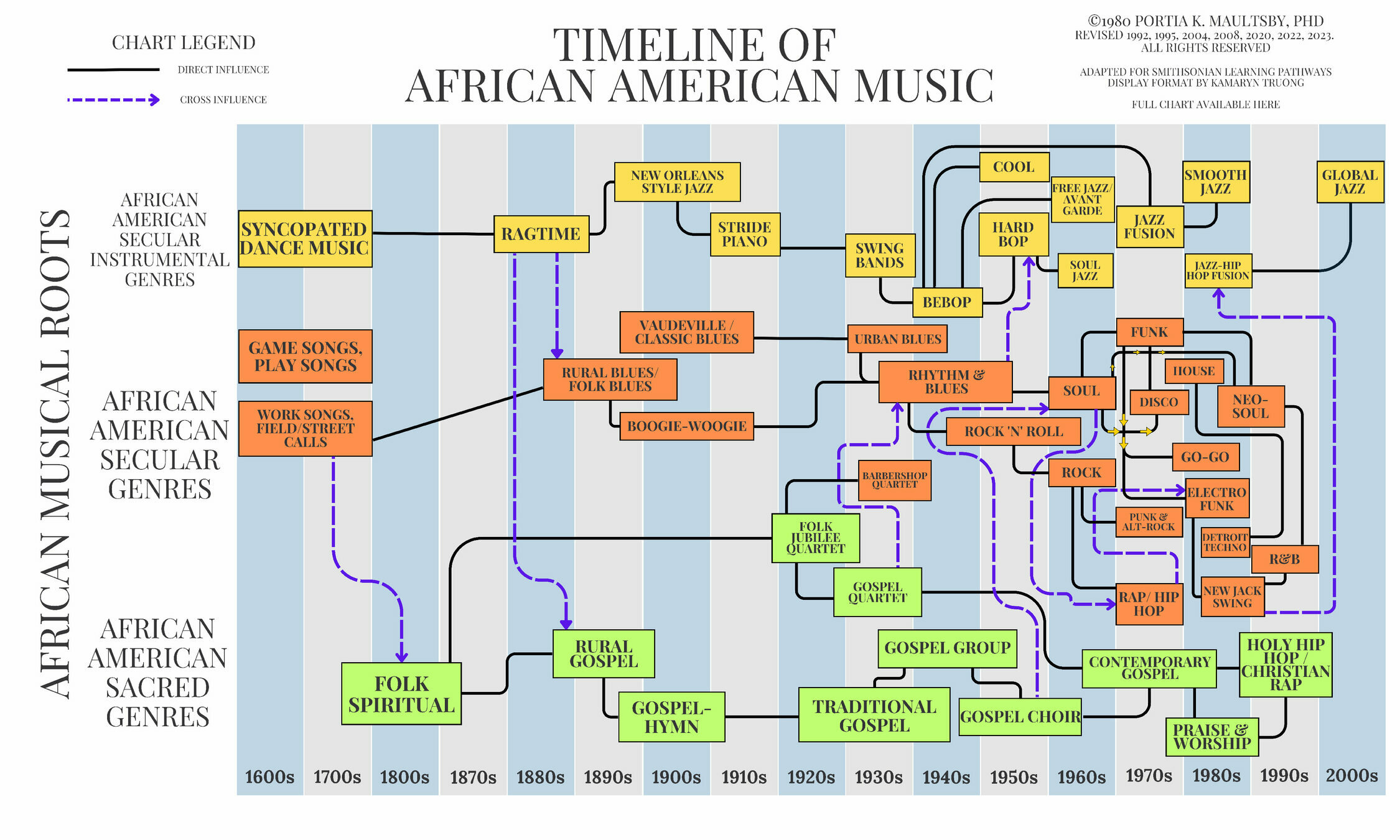Listen What I Gotta Say: Women in the Blues
Lesson 2
Before the Blues: From Africa to America
3rd grade–5th grade

Can you find West African influences in blues music?
Field Workers, by Ellis Wilson. Smithsonian American Art Museum.


Before the the Blues
Hello! I’m the howlin’ hound dog, Sister Rosetta Bark!
I'm here to help you learn about what happened before the blues. Let's look and listen for West African influences in blues music!


Before the Blues: From Africa to America
Blues, by Robert Cottingham. Smithsonian American Art Museum.
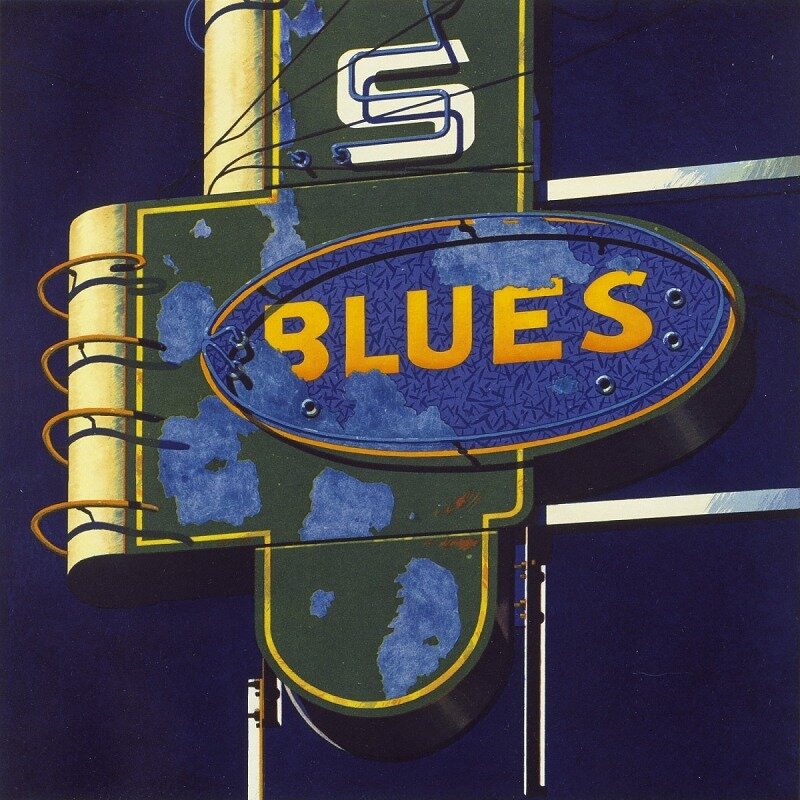
Component 1

The Music Maker - Mood V, made by Solomon Irein Wangboje. Smithsonian National Museum of African Art.

West African Connections to the Blues
20+ minutes
Let's Review!
Let's begin by listening to an example of a type of music that originated in the United States, called the Blues.


The Origin of the Blues


No one knows exactly when and where blues music got its start.

Freedom Lost!

Three hundred years ago, European colonists forced millions of Africans from their homes and shipped them to North America.
Slave-Trade, by George Morland. National Museum of African American History and Culture.

Freedom Lost!

They lost their freedom, but no one could steal their songs, their stories, or their music.
Banjo Player Leading Workers in Song, unknown artist. Blue Ridge Institute.

Blending Traditions

As time passed, the sounds, styles, and instruments people heard in Africa blended with the music they heard in North America.


That blend became known as the blues!
Blues in the American South

The American South was the first home of the blues.
Until the 20th Century, most African Americans lived in the American South, in states such as...
State Drawings, by Danielle Nalangan.
South Carolina
Georgia
Texas
Mississippi
North Carolina
Alabama
Louisiana
The Blues Developed Over Time
The blues blended songs that people sang as they worked and songs they sang as they gathered to pray - such as field hollers, ring shouts, and spirituals.


It took a long time for the blues to become what it is today!

Why Sing?
Enslaved workers had few choices. Singing made the hard work and long hours pass more quickly.


Music to Express Feelings

- Happy music helps us feel happy.
-
Sad music comforts us when we're sad.
-
Holiday music helps us celebrate.
Music has always helped people to express their feelings.

Music to Express Frustration

Music was a powerful way for people to express their frustration.
At the end of the Civil War (1865), the U.S. government passed the 13th Amendment, which legally ended slavery.
But...
African Americans still faced discrimination. They could not vote, live wherever they chose, or attend many schools.
In fact...
Many African Americans still worked long hours on farms doing the same work as before for almost no money.
Blending Traditions

So ... although we cannot pinpoint the exact origins of the blues, through listening, we can guess where some characteristics of blues music came from ...


Let's Listen!
Syncopation and call and response are common characteristics of blues music.
Where do you think these characteristics came from?

1
2
Syncopation: Listen for rhythms that feel off the beat!
Call and Response:
What is the call? What is the response?
"Session Blues," by Big Mama Thornton
Generally Speaking .....
West African Connections


These musical characteristics (syncopation and call and response) were influenced by music traditions from several regions of West Africa.
West Africa Regions Map, by Peter Fitzgerald, CC BY-SA 3.0, via Wikimedia Commons.
Generally Speaking .....
Listening Activity

Next, you will listen to examples of music traditions from West Africa.
As you listen, try to identify if the example represents one or both of these characteristics:
- Call and response
- Syncopation
Then, fill in the blank.
Click to the next slide to get started!
Generally Speaking .....
West African Connections: Example 1

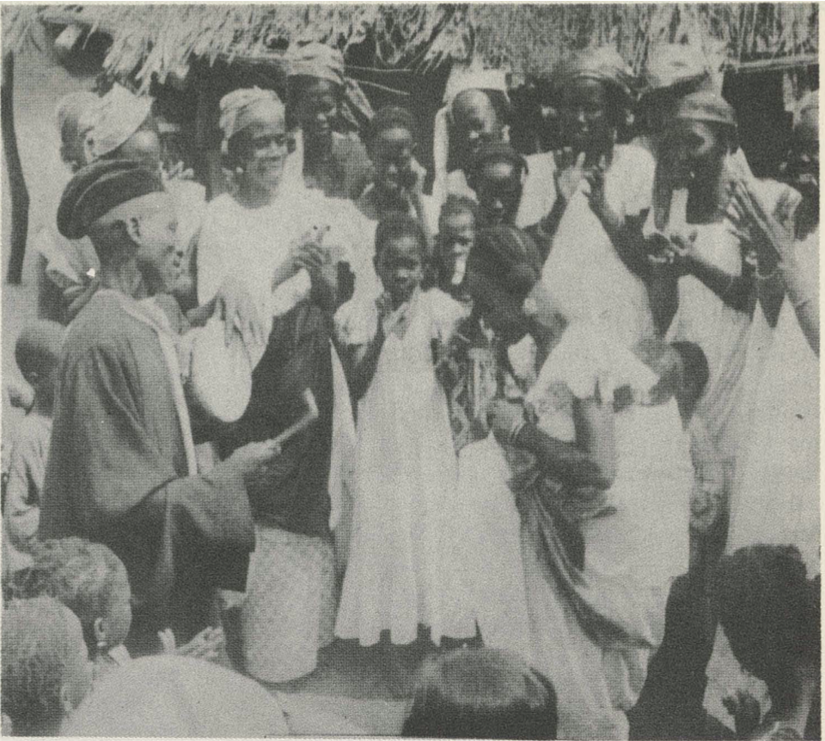
Wolog Naming Ceremony, by David Ames. Folkways Records.
Generally Speaking .....
Syncopation AND Call and Response

In this example, both Syncopation AND Call and Response are represented.

The young women singers respond to the male lead singer.
The rhythm of the chant is off the beat.
Generally Speaking .....
West African Connections: Example 2

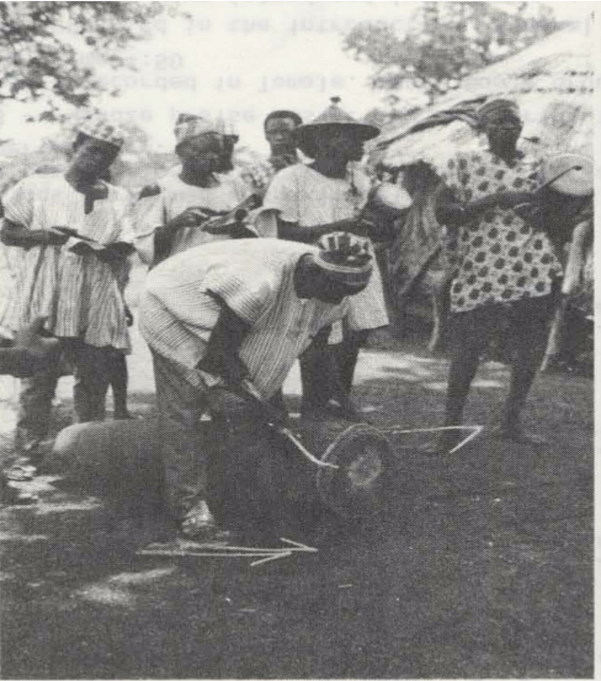
Lunga Drum in Village of Nanton, Photograph by Verna Gillis. Folkways Records.
Generally Speaking .....
Syncopation (and Polyrhythm)

In this example, the Dagomba people use three hourglass pressure drums (lunga) to perform their annual “Harvest Songs.”

The rhythms played on the drums are syncopated.
The relationship between the drums creates a polyrhythm.
Class Discussion

As we learned in Lesson 1, the blues has influenced many other American popular music styles.
Can you think of any popular songs that use call and response or syncopation?

Learning Checkpoint
- What are the origins of the blues?
- What are two parts of the blues that can be traced back to West Africa?


End of Component 1: Where will you go next?

Component 2


Before the Blues: Ring Shouts
20+ minutes
Watch this video...
...about a group called the McIntosh County Shouters.


What is a “ring shout?”
About Ring Shouts

The shout is one of the oldest African-American music performance traditions.
It began almost 200 years ago in the coastal areas of South Carolina and Georgia.
The shout brings together call and response, drum rhythms, and dance.
Groups of people shout to express togetherness and strong religious belief.
Ring Shouts and West African Influences

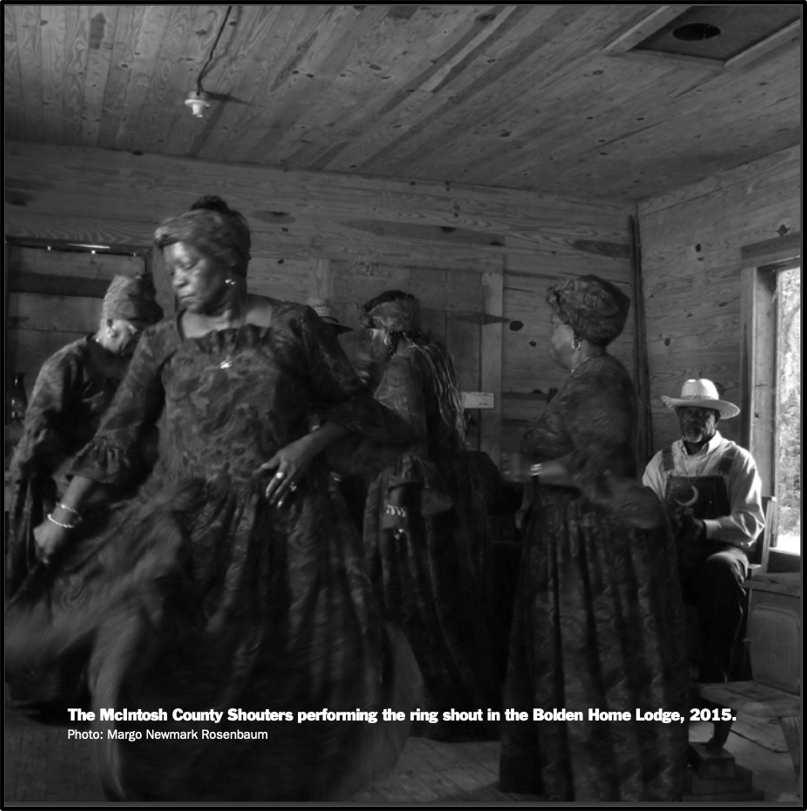
Photograph by Margo Newmark Rosenbaum. Smithsonian Folkways Recordings.
Especially if you completed Component 1, you might have recognized call and response and syncopated rhythms as you watched the video.
The influence of West African music traditions is very noticeable in ring shouts.
About the McIntosh County Shouters


Cover art by Visual Designs. Smithsonian Folkways Recordings.
The McIntosh County Shouters is a group with a long tradition.
They are also known as the Georgia Sea Island Singers.
Their performances often include ring shouts.
All group members are related to each other (by blood or marriage).
Watch another video...

This time, the McIntosh County Shouters perform a song called “Jubilee.”

Do you notice call and response and syncopation?
Discussion: "Jubilee"

After watching the video, reflect on these questions:
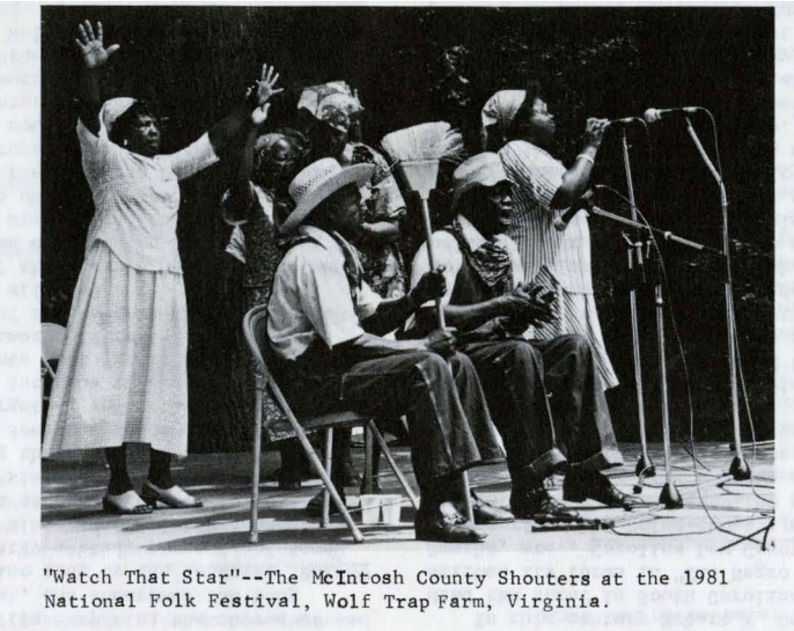
Photograph by Margo Newmark Rosenbaum. Smithsonian Folkways Recordings.
What did you notice about movement?
What did you notice about the song structure?
What did you notice about rhythm?
Discussion: "Jubilee"

While watching the video again, reflect on these questions:
What do you notice about movement?
What do you notice about the song structure?
What do you notice about rhythm?
Engaged Listening (Make Music!)

Listen, and learn the repeated rhythmic pattern (hand-clap) by ear.
Clap the pattern along with the audio recording of “Jubilee,” by The McIntosh County Shouters.
Rhythmic Analysis

The syncopated rhythmic pattern we just performed is often referred to as 3+3+2.
Most often, the resulting 3+3+2 pattern is notated like this:
4
4
One measure of 4/4 time has 8 subdivisions (eighth notes):
4
4
Within a 3+3+2 pattern, the eighth notes are grouped together like this:
4
4
Ostinato Patterns

The repeated pattern you just clapped is called an ostinato pattern. Ostinato patterns repeat over and over.
Call and response, syncopation, dance, and ostinato patterns are important clues that ring shouts have West African influences.
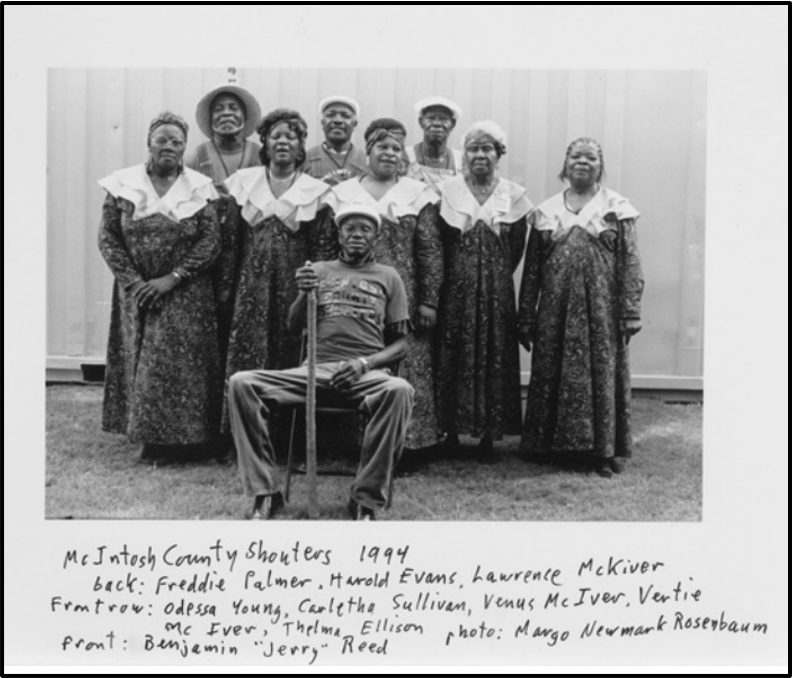
McIntosh County Shouters 1994, photograph by Margo Newmark Rosenbaum. Smithsonian Folkways Recordings.
Engaged Listening (Make Music!)

Next, learn the two main melodic patterns by ear.
- Sing these call and response patterns along with the audio recording.
“Oh, my Lord!”
“I love Jubilee!”
When you are ready, practice singing the response while clapping the rhythmic pattern (along with the recording).
Closing Discussion

Can you describe a "ring shout"?
2. Take turns writing down key words.
3. Share your ideas with the class.
1. Work with a partner to share what you have learned about ring shouts.

Learning Checkpoint
- What are ring shouts?
- Why do we trace ring shouts to West Africa?


End of Component 2: Where will you go next?

Component 3


Before the Blues: Field Hollers
20+ minutes
What is a Field Holler?

Field Workers (Cotton Pickers), by Thomas Hart Benton. Hirshhorn Museum and Sculpture Garden.
Throughout America's early history, enslaved people labored on large farms called plantations.
They were not allowed to visit or talk with neighbors.
But they still passed information back and forth by singing songs. They called the songs "field hollers."

Attentive Listening
Listen to this example of a field holler.
As you listen, think about the following guiding questions:

What do you notice about structure?
Who is singing?
What is the singer is feeling?
What do you notice about texture?
"Field Calls," by Annie Grace Horn Dodson. Folkways Records.
Annie Grace Horn Dodson
On this recording, a woman named Annie Grace Horn Dodson recalls (from memory) the call of the field workers during her childhood.



This field call is in a minor key, which gives it a melancholy feel.
Annie Grace Horn Dodson, by Harold Courlander. Folkways Records.
More About Field Hollers
Sometimes field hollers were sung in unison (everyone all together), and sometimes “calls” and “responses” were sung from different parts of the field.


On this recording, you can clearly hear one singer (no harmony or other instruments) and the “call and response” form.
Cotton Pickers, by Merritt Mauzey. Smithsonian American Art Museum.

Annie Grace Horn Dodson sings both the “call” and the “response.”
Field Hollers as Communication


Copy Work, Photo of Workers in the Field on Drew Plantation, by Henry Clay Anderson. National Museum of African American History and Culture.
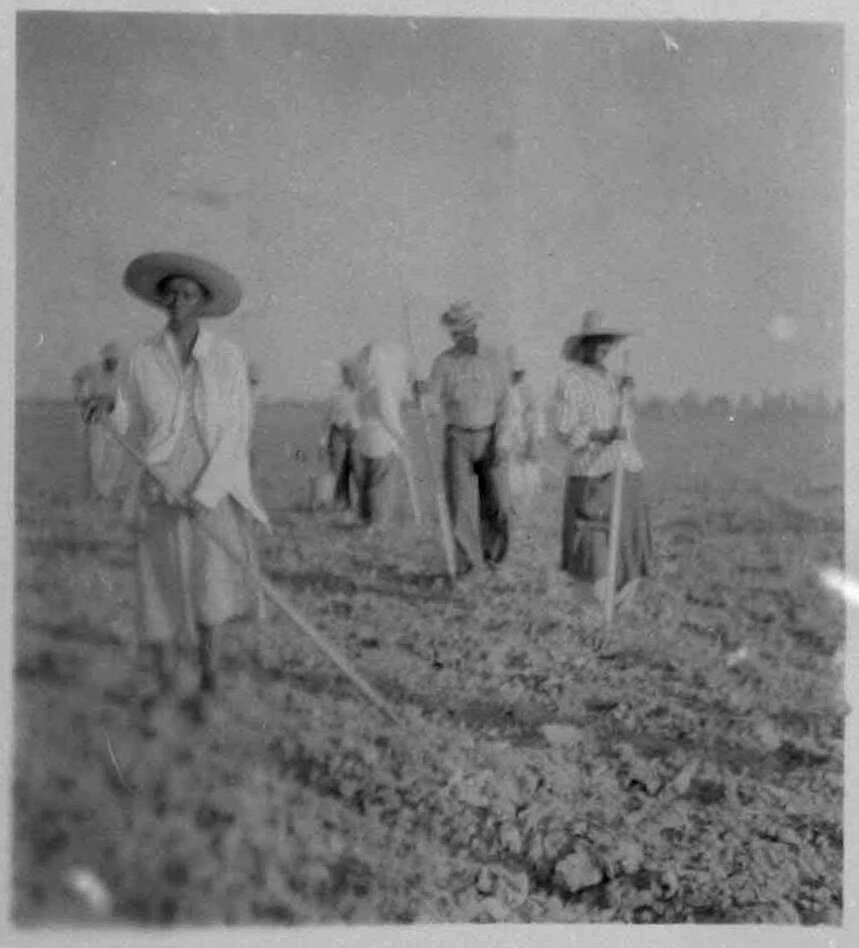
Sometimes, field hollers were used to pass secret messages!

Field Hollers: Example 2
Listen to another example of a “field holler.”
- As you listen, think about the following guiding question:


What are some similarities and differences between this recording and the previous recording?
"Greeting Call," by Annie Grace Horn Dodson.
This track is called “Greeting Call”
-
It was recorded by the same singer . . . Annie Grace Horn Dodson.
-
The mood seems happier.
-
This melody is less repetitive and seems to have some improvisation.
-
Both hollers are secular (no religious meaning).
-
Both hollers use call and response form.



About "Greeting Call"
This call has lyrics - or words - that tell a story:
A man has returned after a long absence, and is greeted by this question...


(Call): Hey, Rufus! Hey boy! Where in the world you been s0 long? Hey buddy, hey boy!
(Response): Well I been in the jungle! Ain't goin’ there no more!
Engaged Listening Activities
Within the next activity, you will have a chance to actively engage with the first field holler we listened to today, with and without the recording.


1. Echo Sing


Your teacher will ask you to echo-sing short melodic patterns that include the notes “do, re, me” (the first three notes in a minor scale).
-
You can echo the patterns using neutral syllables (such as “loo”) or solfège syllables.

2. Sing the Response


Sing the response pattern after Annie Grace Horn Dodson sings the call (with the recording):
-
Call (Dodson sings): “Who hoo, who hoo”
-
Response: “Yeh hee, yeh hee”

3. Sing the Call and the Response


Listen to the recording again . . .
This time, half of the class can sing along with the "call" and the other half of the class can "respond".

4. Perform


This time ... try it without the recording.
- Half of the class will sing the “call” while the other half sings the “response.”
- Then ... switch parts so each student gets a chance to sing both the call and the response!
5. Use Notation


- Can you find a way to notate the call and response?
-
Can you sing the pattern while following along with the notation?
-
Is it possible to accurately represent this pattern using staff notation? Why or why not?
-
Teachers can lead a short discussion based on student responses to this question.
-
Extension Activities:
Improvising, Creating, and Documenting


Teachers can lead students through a question/answer activity using the notes “do, re, me.”
- Teachers sing the “call” and then rather than echoing, students answer back using a different combination of the same three notes.
- At first, the students can answer back all at once. When students gain confidence, they can answer one at a time.
- Students can create and find ways to notate their own short call and response patterns, using the notes “do,” “re,” and “me.”
Connecting Field Hollers to the Blues


Form
-
Many field hollers used call and response form.
-
Call and response between the vocalist and instrument(s) is an important part of the blues tradition.
Vocal Style
-
used bent pitches
-
Bent pitches or "blue notes" are important to the performance style of the blues.
Improvisation
-
The field holler was often developed "on the spot."
-
In blues music, this is known as "improvisation."
"Session Blues," by Big Mama Thornton
Field Hollers after the Civil War
The field holler tradition continued after the Civil War (which ended in 1865), disappearing slowly as the conditions of life changed.


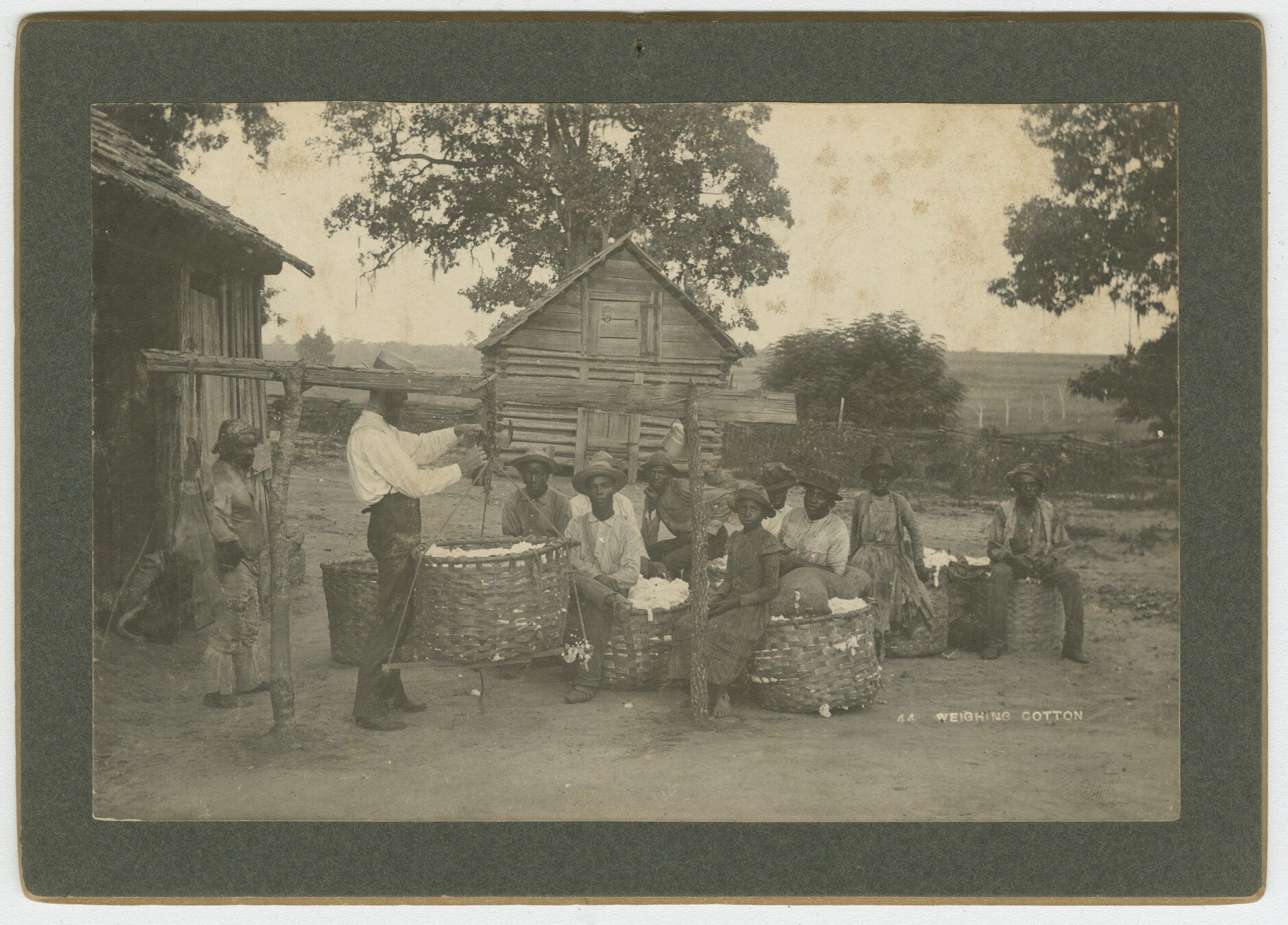
However, when this album was released (1951), these types of field calls were still heard in many rural parts of the southern United States.
No. 44, Weighing Cotton, photograph by A. W. Möller. National Museum of African American History and Culture.
Learning Checkpoint
- What are field hollers and why were they used?
- What are some of the musical practices found in field hollers that are also found in the blues?


Lesson 2 Media Credits


Audio courtesy of
Smithsonian Folkways Recordings
Video courtesy of
Smithsonian Folkways Recordings
Images courtesy of
National Museum of African American History and Culture
Smithsonian American Art Museum
Hirshhorn Museum and Sculpture Garden
Smithsonian National Museum of African Art
Smithsonian Folkways Recordings
© 2024 Smithsonian Institution. Personal, educational, and non-commercial uses allowed; commercial rights reserved. See Smithsonian terms of use for more information.
This Pathway received Federal support from the Smithsonian American Women's History Initiative Pool, administered by the Smithsonian American Women's History Museum.
For full bibliography and media credits, see Lesson 2 landing page.

End of Lesson 2: Where will you go next?




